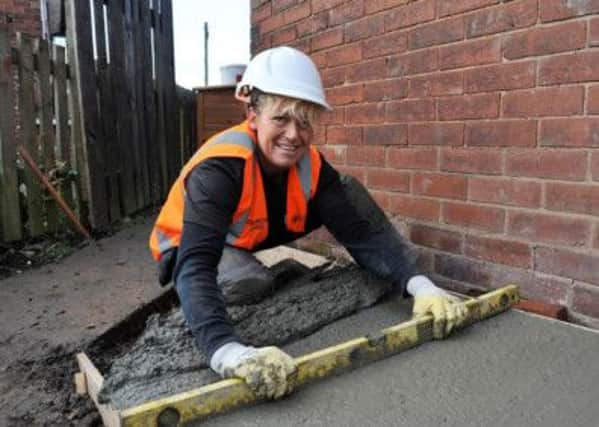The female role models who are building a new future


Kelly Aitken has always enjoyed being outdoors and making things with her hands.
When she found herself looking for work, the 36-year-old could have followed in her mother’s footsteps and become a hairdresser. But instead, she decided the time was right to pursue her dream of a career in construction.
Advertisement
Hide AdAdvertisement
Hide AdAfter enrolling in a construction skills course with Leeds City Council, Kelly, who lives in the city, went on to start a three-year apprenticeship in bricklaying in 2008.
Today, she is a fully qualified bricklayer working on sites for the council and couldn’t be happier with the path she chose.
“I’ve always loved making things since I was a kid and I just thought, if I really want to do something, I should do it,” she says.
“I don’t think of myself as any different and I’m just doing something I really enjoy. My son Baily has seen how hard I’ve worked too and now he’s gone in for a plumbing course.”
Advertisement
Hide AdAdvertisement
Hide AdAlthough apprenticeships are now firmly established as a path into a huge variety of careers, women like Kelly who are making their way in what are traditionally considered “male” jobs are still surprisingly rare.
Just three women in Leeds put themselves forward for apprenticeships in construction, planning and the built environment in the last year – compared with 264 men.
The numbers reflect the national trend, with the recent Totally Wasted report by the Young Women’s Trust showing that 61 per cent of female apprentices work in the same five sectors – business administration, child development and learning, hairdressing, hospitality and catering.
In contrast, nationally just 18 per cent of male apprentices work in the same sectors, with more opting for jobs in construction and engineering along with finance, legal services and logistics.
Advertisement
Hide AdAdvertisement
Hide AdBut there’s not only a huge disparity in the types of apprenticeships that men and women are going into. There’s also a notable gap in their chances of gaining a job in the industries they are choosing.
The report also shows that for every qualified construction worker, there are two vacancies to apply for. However, for every job in hair and beauty, there are five qualified practitioners, making it much harder to secure work.
In an effort to highlight the issue of women pursuing a limited range of careers, the Leeds Enterprise Exchange recently held an event aimed at bringing together employers, schools and others to help get young people into work and in turn boost the local economy.
Councillor Lucinda Yeadon, Leeds City Council’s executive member for digital and creative technologies, culture and skills, says: “Leeds is a city filled with opportunities for male and female apprentices and that there are certainly no restrictions on them in terms of the choices they are able to make.
Advertisement
Hide AdAdvertisement
Hide Ad“But, as these figures show, it’s clear that a gender gap does still exist in the minds of young women which, unfortunately, may stop them taking that step into a career that they really want and which they could make a big success of.”
Coun Yeadon added: “It’s important that we get the message out there that there is no such thing as a ‘man’s job’ or a ‘woman’s job’ – those kind of stereotypes are completely outdated.
“The opportunities are out there for women – they just have to want to take them.
“Apprenticeships are the perfect way to spread that message because they’re all about finding your way into a job that suits you as an individual.”
* For more information on applying for apprenticeships visit www.leeds.gov.uk/leedsapphub